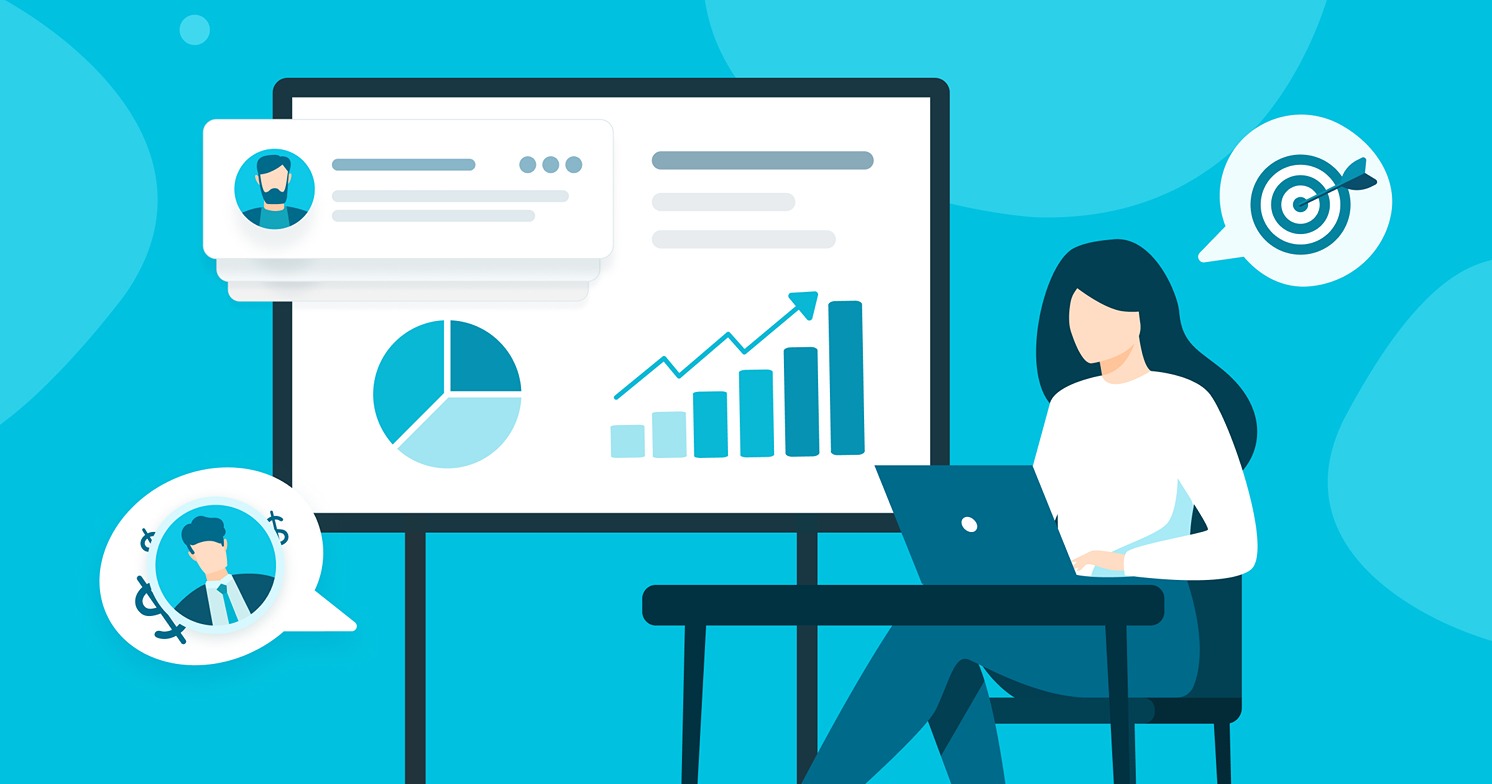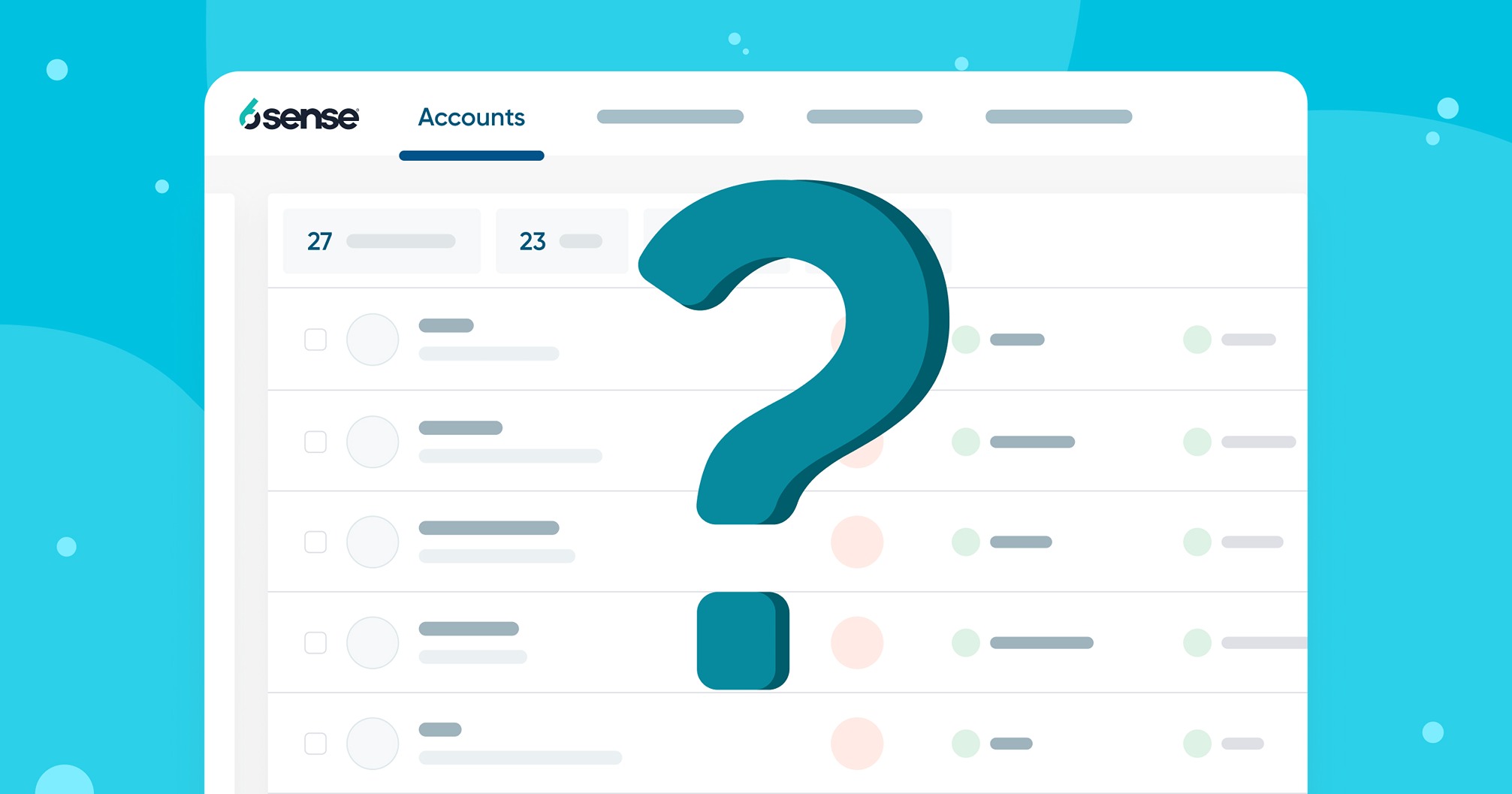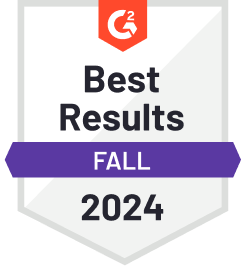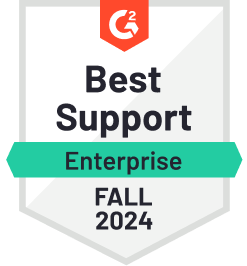We’ve got news for you. Emails aren’t going anywhere. At least not anytime soon. In fact, 86% of office workers agree that email is their favorite mode of communication. However, cutting through the noise can be a challenge, especially considering that the typical office worker receives a whopping 121 emails daily. Today we’re going to go over how to write a follow-up email that people respond to.
If you want your email efforts to yield results and secure sales, you’ll need more than just a clever subject line or amusing GIFs. You’ll need a plan for sending an effective follow-up email.
Jump to a specific topic below or continue reading to get started
Why Are Follow-up Emails So Important?
In sales, sending out a single email usually isn’t going to cut it. You need to build trust with your prospect to succeed, which happens over time through multiple touchpoints. In fact, according to Marketing Donut, 80% of non-routine sales occur after at least five follow-ups from the initial contact.
While email is an invaluable tool in sales, it also has a major disadvantage: the messages you send have a short shelf life. In fact, an estimated 19% of email campaigns are opened within the first hour of sending. After 24 hours, the chances of an email being opened drop below 1%. A follow-up email lets you reach your prospects, even if they missed your original message.
Follow-ups also typically result in higher response rates: Yesware’s data, for example, reveals that if you don’t receive a reply to your first email, you still have a 21% chance of receiving one to your second email.
Fast Facts About Email
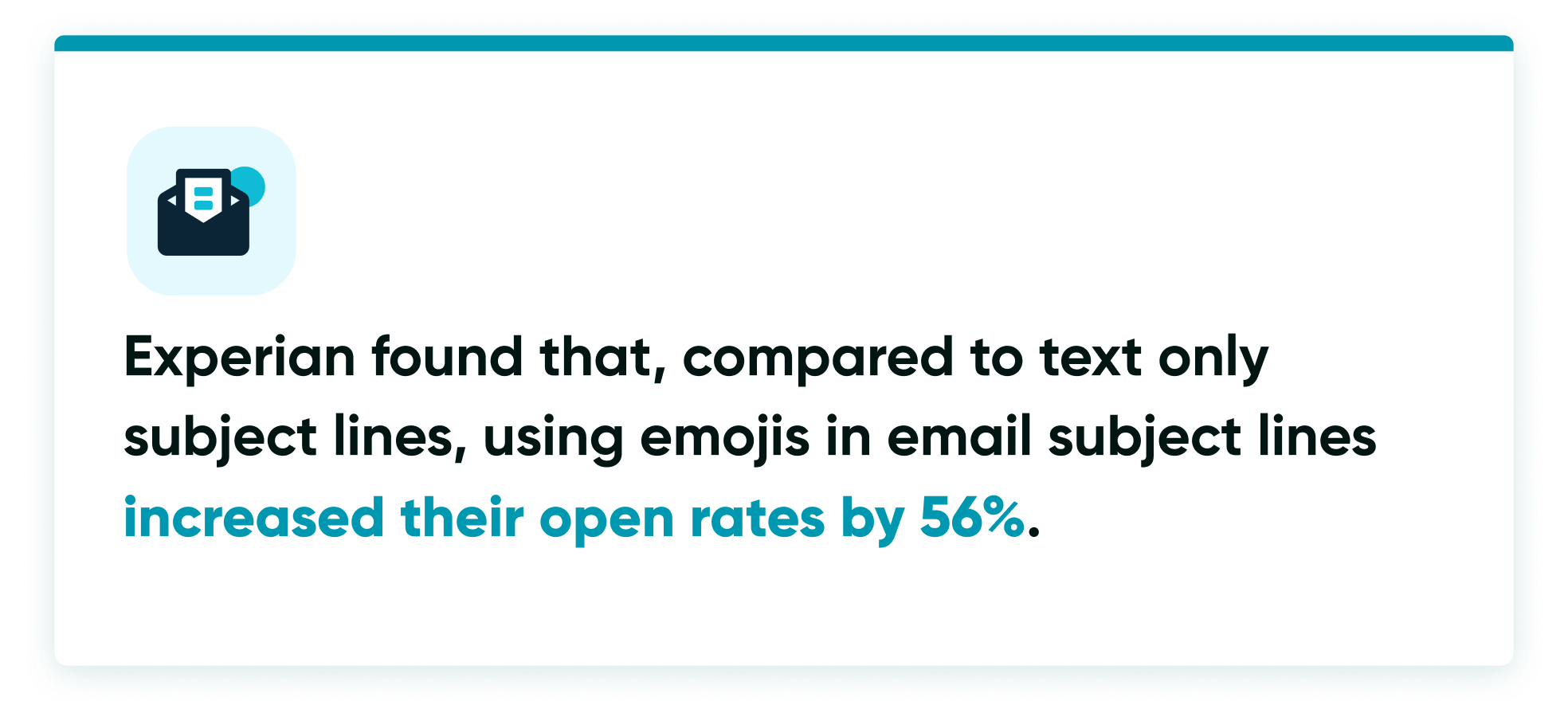
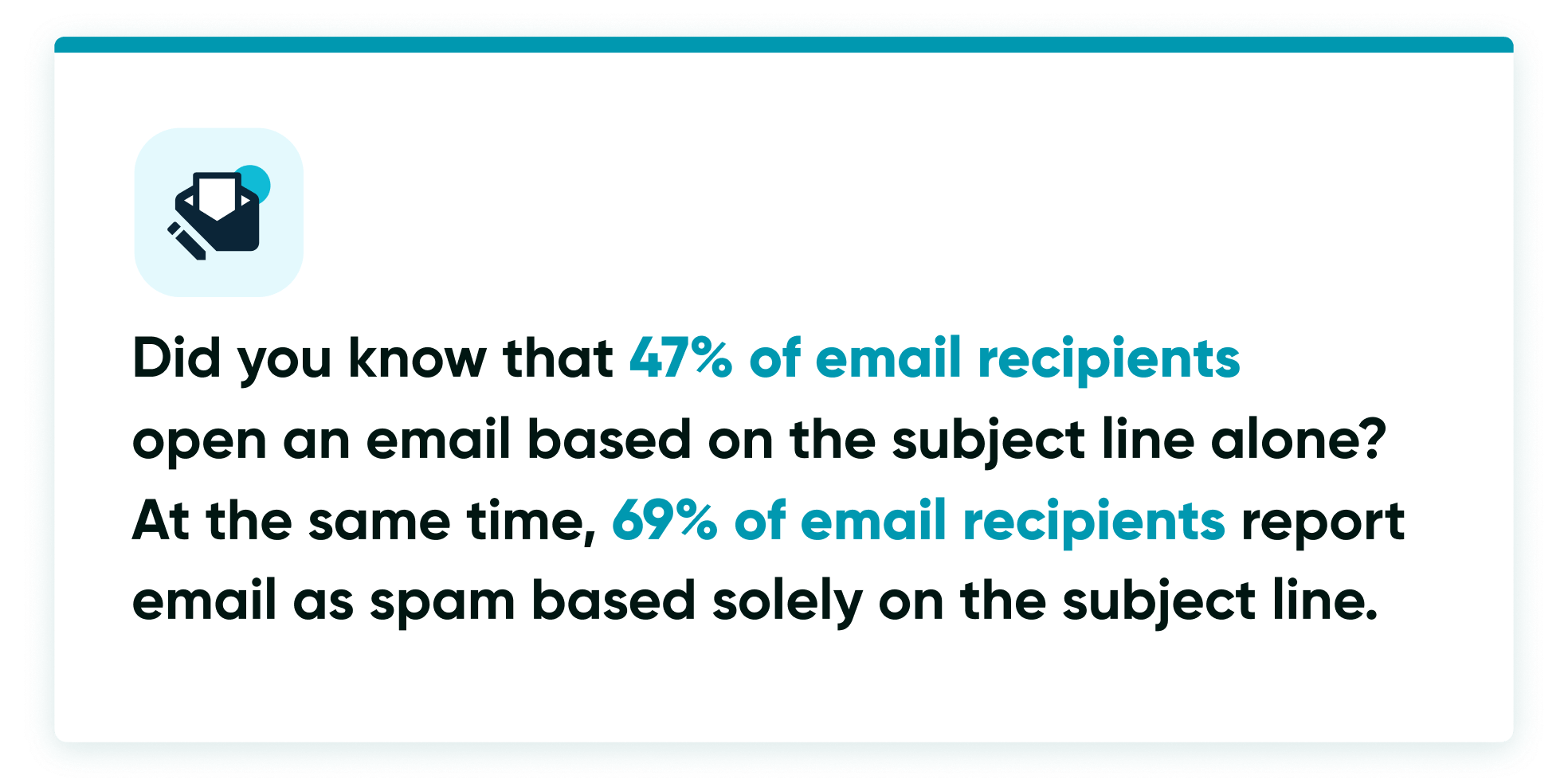
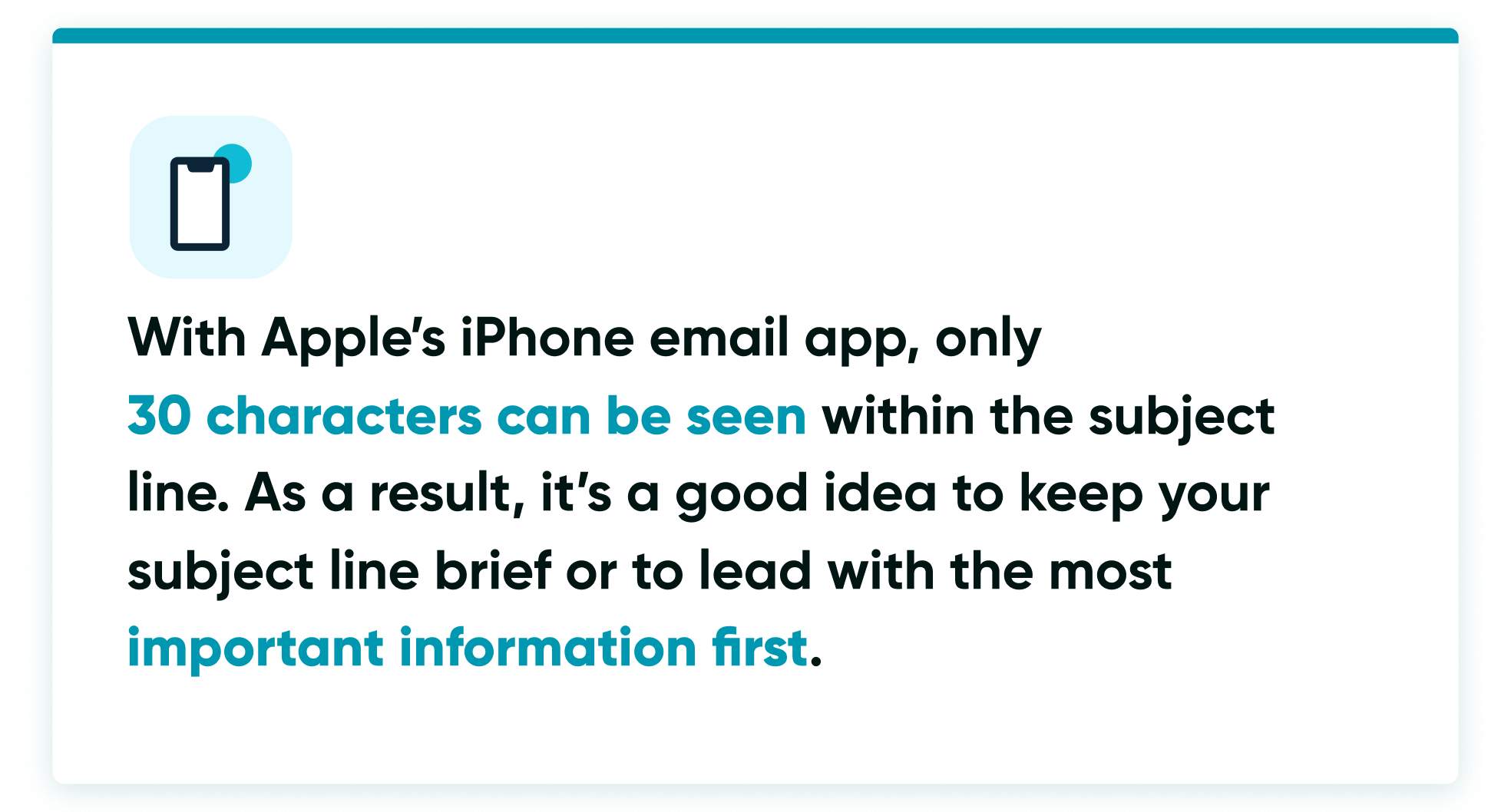
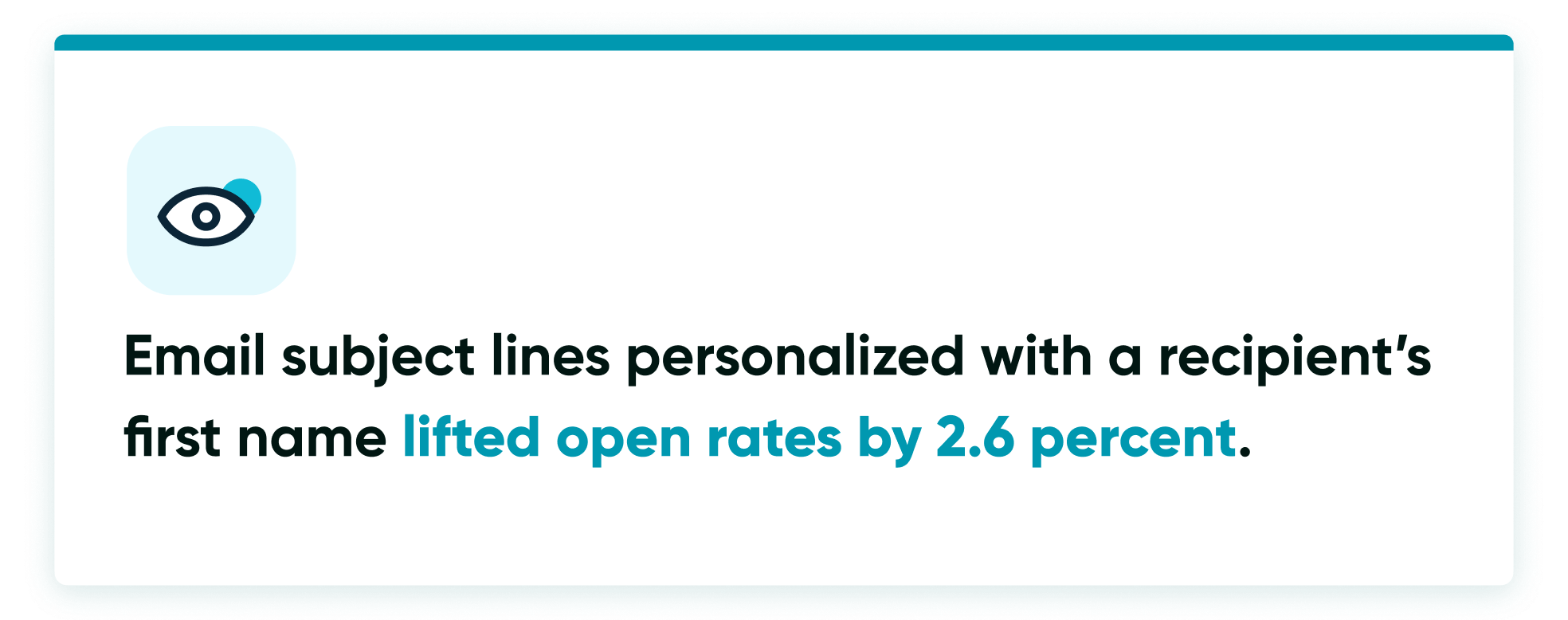

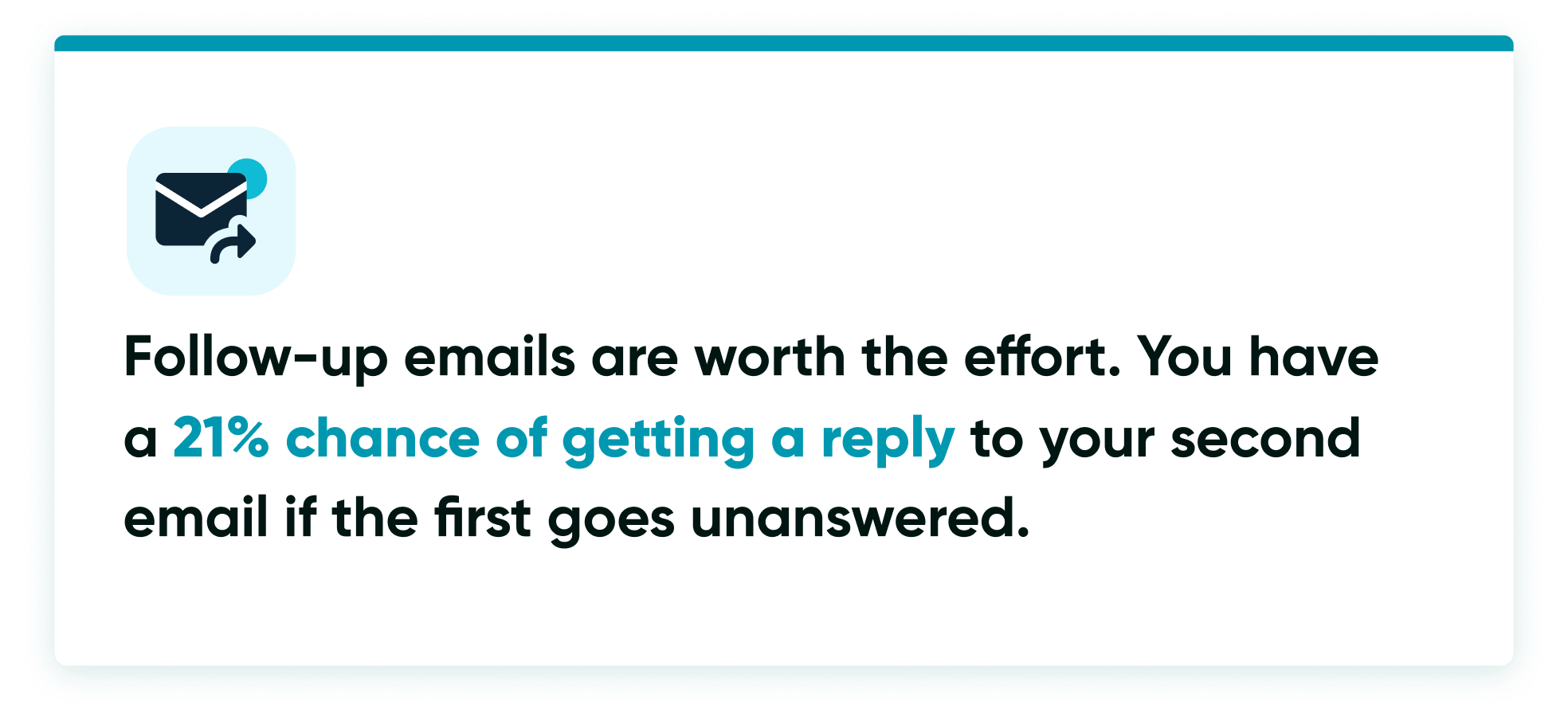
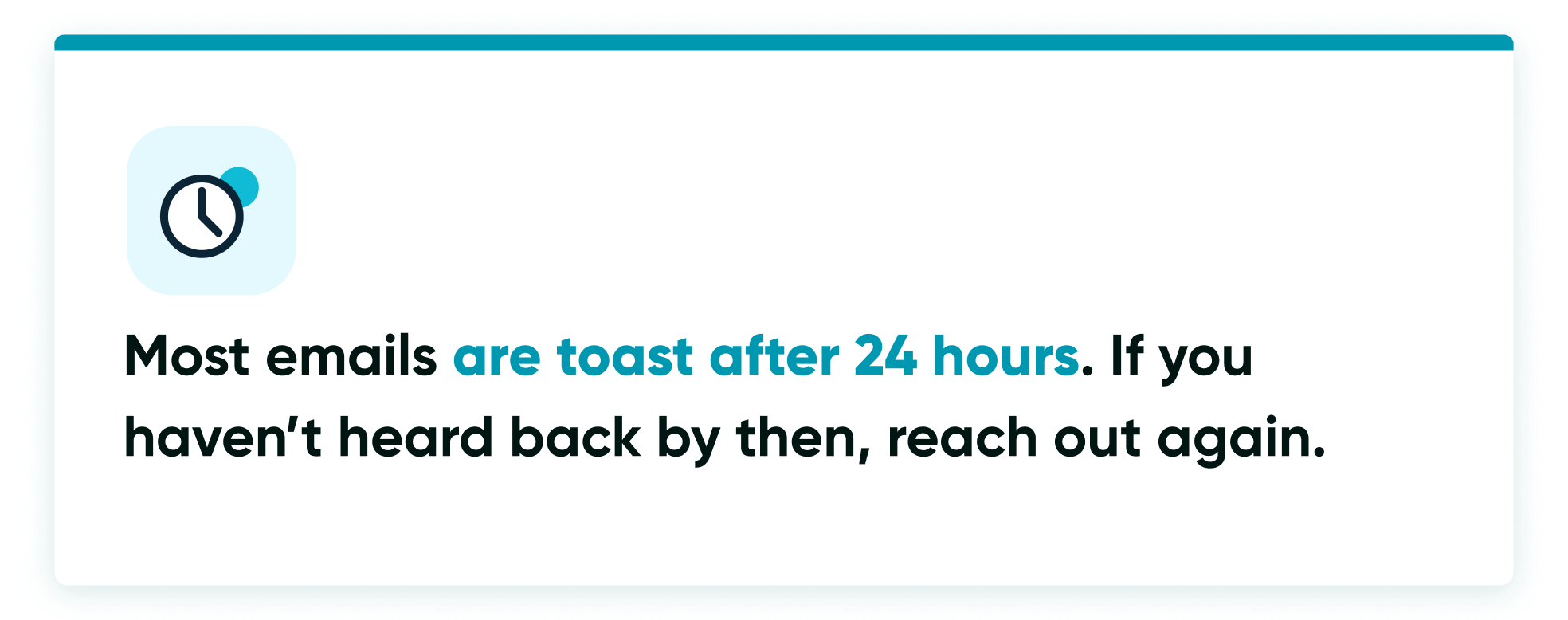
When Should You Send a Follow-up Email?
In email marketing, timing is a huge factor determining whether you successfully connect through email after no response. A 30-minute window could mean the difference between your email being clicked and read and deleted without hesitation.
There’s a lot of guidance out there about when to send a follow-up email, but it’s important to remember that nothing will be as effective as A/B testing your own data. So you must use quality sales management tools to track statistics and open rates to formulate effective strategies.
But in terms of general advice, here are some of the best tips about timing.
Avoid the Monday Purge
Most professionals start their week by organizing their tasks and sorting through the emails they receive while away. They’ll often delete anything that appears unimportant or unsolicited, so you should avoid sending them emails on Saturdays, Sundays, or Monday mornings.
Avoid sending follow-up emails on Fridays
At the end of the week, most professionals spend their time finalizing tasks and thinking about their weekend plans. These professionals aren’t in the right mindset to start thinking about new products or prospects, so it’s better to avoid sending emails on Fridays.
Midweek at 2 pm is a good time to send follow-up emails
According to research conducted by Mailchimp, your best bet for achieving email marketing success is sending emails on Tuesdays, Wednesdays, or Thursdays at around 2 pm.
Use data to determine the best times for you to send follow-up emails
However, the following best practices can also be challenging, given that you run the risk of sending your email at the same time as everybody else. In other words, you can reduce the amount of attention your email receives and lower your CTR. Therefore, you should constantly experiment and rely on your data to find the best time to send emails.
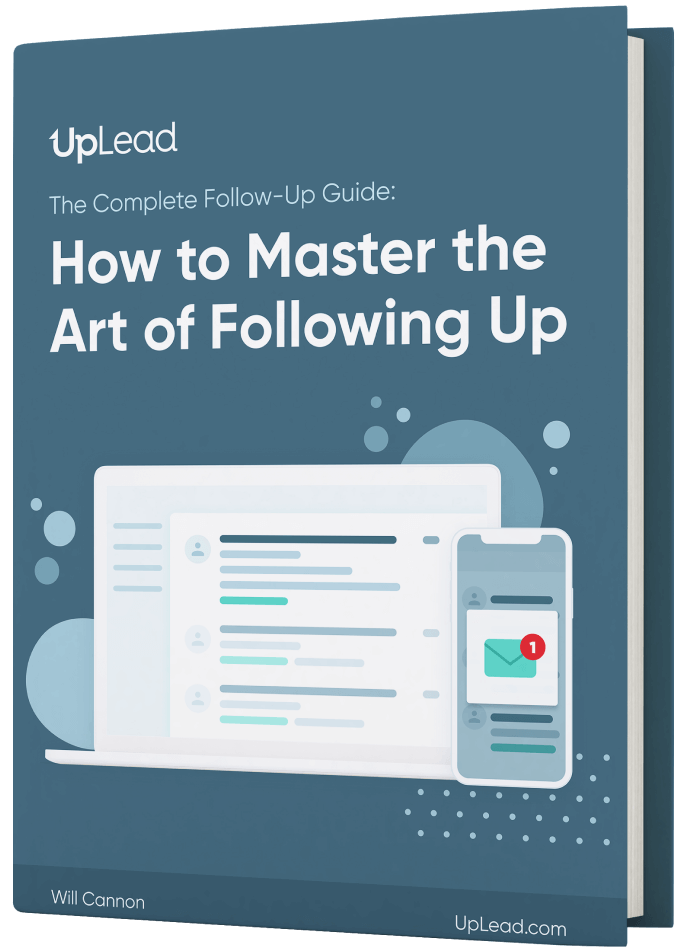
How Do You Write a Follow-Up Email?
Your follow-up email’s subject line, messaging, and structure will also play a big role in determining your success. Here are the key steps to writing a fantastic follow-up email.
1. Define the Purpose of Your Follow-up Email
First things first. You want to determine exactly why you’re sending your follow-up email. This step will be much easier if you have a detailed sales funnel.
For example, let’s imagine that a member of your team met with a prospect at an industry event last week. The lead has since gone cold, but you want to move him along the sales funnel. This tactic may mean that your objective is to reinvigorate the relationship.
Now that you have this objective in mind, you can think about how to achieve it via your email. For example, you might decide to send a piece of educational content about your product or service that requests a follow-up conversation.
2. Create a Snappy Email Subject Line
With your subject line, you have a small window of opportunity to capture your recipient’s attention. So you have to capitalize on it as much as possible. Here are the features of the best kinds of email subject lines:
Catered
The best subject lines are developed by using quantifiable data. You should make sure that your subject lines are catered to your audience, depending on key demographic information, the device they use, and the email client they prefer.
Short
Data from Marketo suggests that the optimal length of subject lines is currently 41 characters spread across 7 words. While the specifics will vary according to your own data, it gives you a good benchmark to aim for: Keep it short, and find a creative way to get to the point.
Detailed
Your target audience has a limited amount of time and wants emails that respect these terms. You should make sure that your subject line is as clear as possible and that it helps your recipient decide whether they want to read it.
Engaging
Finally, you should try to find a way to make the subject line engaging without feeling spammy. Our brains are hardwired to spend extra time and attention on wordplay. In other words, you can capture your recipient’s attention using innovative subject line techniques.
3. Use Direct and Clear Language in Your Follow-up Email
Most email recipients receive an average of 121 emails a day. In other words, you must be brutal about determining whether an email is worthy of readers’ time and attention.
If an email wastes readers’ time, it can hurt your relationship with your prospect. In other words, you should ensure that every email you send is direct and clear. In the first step, you defined a clear objective for your email, so use it to get right to the point.
Tell them why you look forward to hearing from them, and finish with a strong call to action.
Your recipient will appreciate that you respect their time, so you will be much likelier to receive a response. It also helps you build positive feelings.
4. Get Professional Help with Your Follow-up Email
Every business delegates responsibilities in different ways. In some companies, sales professionals are responsible to write a follow-up email. In others, the marketing team might be responsible for creating templates and drafts.
Whichever method you choose to follow, it’s important that your emails maintain top quality. To make sure everything is correct, you’ll want to enlist the help of a copywriter, so you can put your best foot forward by writing an amazing email.
5. Plan Your Next Follow-up Email
When it comes to email marketing, perseverance is key. A study from Iko System demonstrates that the sixth email in a marketing sequence can receive a huge boost in terms of the response rate.
You should structure your email with your sales funnel in mind. If your recipient doesn’t reply to this email, what will the next action be, and how can you organically line it up?
5 Follow-up Email Templates
Looking for some follow-up email templates to kick your email marketing strategy up a notch? Here’s a look at five of the best ones out there:
Short Follow-up Email Template
This template from Sean Bestor over at Sumo is short and sweet. You can use this template to casually make contact with a prospect after he or she fails to reply.
Hey [First Name],
I hope you had an amazing weekend. I wanted to see what your team thought of my suggestions. Let me know if I can help at all.
All the best,
[Your Name]
We like that this email includes pleasantries, but they’re kept to a minimum to save time. The second sentence is very direct, and the purpose of the email is clear. This email is great if you’re looking for a delicate way to reconnect with a prospect politely.
Post-Event Follow-up Email Template
If you recently attended an event or conference and connected with a prospect, you’ll want to drive home the key messages you discussed and move things forward. This template from HubSpot is very effective:
Dear [Prospect],
What an exciting show! I hope you made great connections and learned some things you can immediately use in your business.
I’m sure that [objective (e.g., effectively increasing sales)] is at the top of your list. As promised, here are [the details of the content (e.g., Six Ways to Increase Your Sales)]. If you’d like more in-depth information on any of the ways to implement the [details of content], I’d be delighted to have a 30-minute conversation with you and dive into that.
I’m here to be a resource for you, so don’t hesitate to call me.
Best regards,
[Salesperson]
This post-event email is excellent. It opens with a polite and direct reminder of the meeting before launching into what the prospect stands to gain. The piece of content is a nice touch. The CTR can be tracked to determine the next action for the people; if they click but don’t reply, the next email could ask for feedback about the resource.
There’s also a direct call to action (CTA). In other words, there’s the potential to move the prospect through the sales funnel and take things to the next level.
Call To Action Follow-up Email Template
Sometimes, you’ll hit an impasse with your email marketing. At that stage, this template from Piotr Zaniewicz from Right Hello could come in handy:
Hi {{Name}},
I see you’re too busy to reply at the moment. Could you just hit me back with the number from the list below (1, 2, or 3) that best describes your response?
- Please leave me alone!
- Too busy. Email me again in a month.
- I’ll reply in a week.
Thanks!
This email is a great way to get a response from a prospect, so you can quickly figure out where you stand. Many prospects will appreciate the direct nature of the email, especially since you’re considering their time.
Direct Follow-up Email Template
It’s no fun to receive an endless chain of emails. Rather than inspiring your prospect to act, these emails could possibly turn them away. This template from Dhruv Patel of SalesHandy helps you tactfully ask your prospect to take action:
Hi {{Name}},
I hate pushy salespeople. At the same time, I’d hate to think I gave up on trying to help you when all you needed was one piece of helpful information I forgot to give you. ’
All the best,
Salesperson
This email is a Hail Mary pass that helps you discover exactly what your prospect hopes for. So it’s a great way to inspire action.
Informative Follow-up Email Template
After an excellent initial call, you’ll want to deliver on your promise to share some extra resources. This template by Neville Medhora from Kopywriting Kourse helps you accomplish this goal:
Hey {{Name}},
It was great meeting you this afternoon.
1.) Here’s a handy Business One-pager you can print and send to anyone in the department.
2.) I’ve attached the full slide deck in a PowerPoint presentation.
3.) I’ve also attached the full custom SEO report on your website. Feel free to share this information with the team.
All the best,
Salesperson
As you can see, this email is packed with information, yet it isn’t too heavy. The formatting is simple and clear, which makes it easy to read.
The guys at Gmelius recently published a great article with more follow-up templates specifically related to sales.
5 Examples of Real Follow-up Emails
It’s important to try and learn from the best. Here’s a look at five follow-up email examples that have achieved proven results.
Follow-up Email Example: Sketch

Sketch is a graphic design tool used by thousands of professionals around the world. This tool is unique. After it expires, the user can still use the latest version without renewing his or her license.
This email was sent to existing customers, clearly explains the benefits of Sketch, and offers a direct call to action. The simplicity of the email means that it will be easy for Sketch to track engagement rates, and it articulates the ways small adjustments can lead to improvements.
Follow-up Email Example: Twilio

In this email, Emerald aimed high: She emailed Howard Schultz directly. By just using plain text, Emerald indicates that the email is unique. The ideas were great and tied into the specific initiatives that Starbucks was running.
Sometimes, a simple, enthusiastic email is all you need! If you research and ensure you have what your prospect is looking for, everything will naturally fall into place.
Follow-up Email Example: Personal

This email keeps things personal and refers to a shared connection to get things started. It’s a very effective way to get prospects interested and ready to reply. If you have similar ammunition, don’t be afraid to use it!
Follow-up Email Example: LearnVest

LearnVest is a financial planning tool. While it operates in B2C, it has a great post-registration follow-up email. And while the copy is sparse, the design helps customers quickly read through it and get started.
Follow-up Email Example: Canva

Canva is a very popular in-browser tool for graphic design. Its follow-ups use simple, direct messaging to drive engagement and inspire readers to explore Canva in more detail.
This example shows how content can be intelligently reused throughout email marketing to engage with your audience.
Back to You
An effective follow-up email is a delicate science. You must leverage data as much as possible to make informed, appropriate decisions that boost your key metrics. Above all else, treat your recipients with respect, and you’ll be sure to notice improvements.

